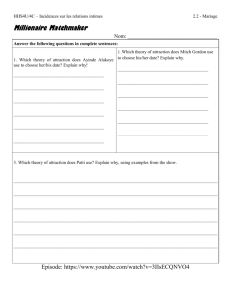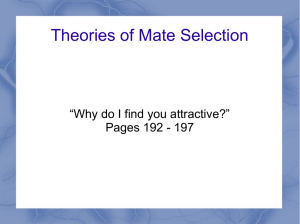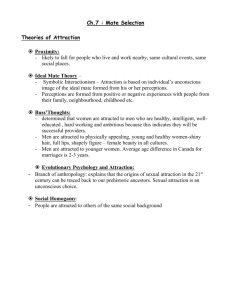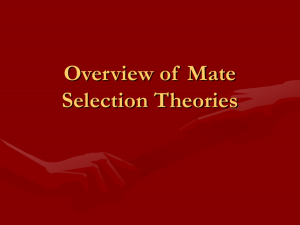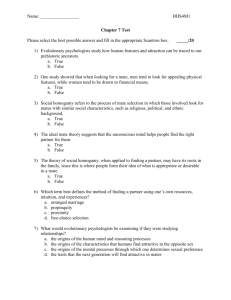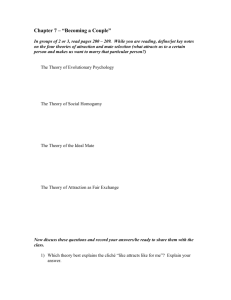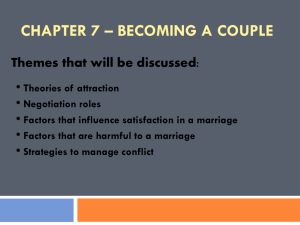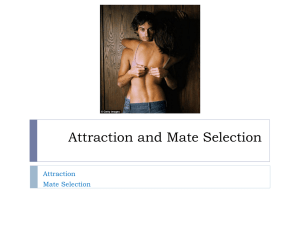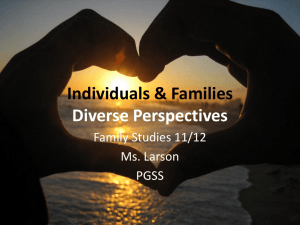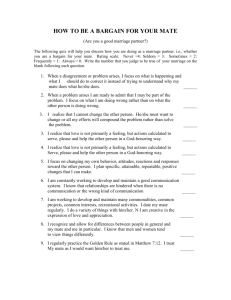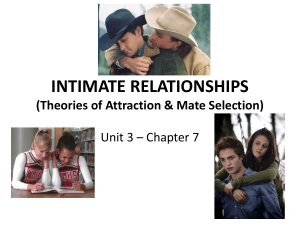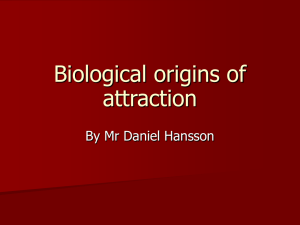Attraction and Mate Selection Theories
advertisement
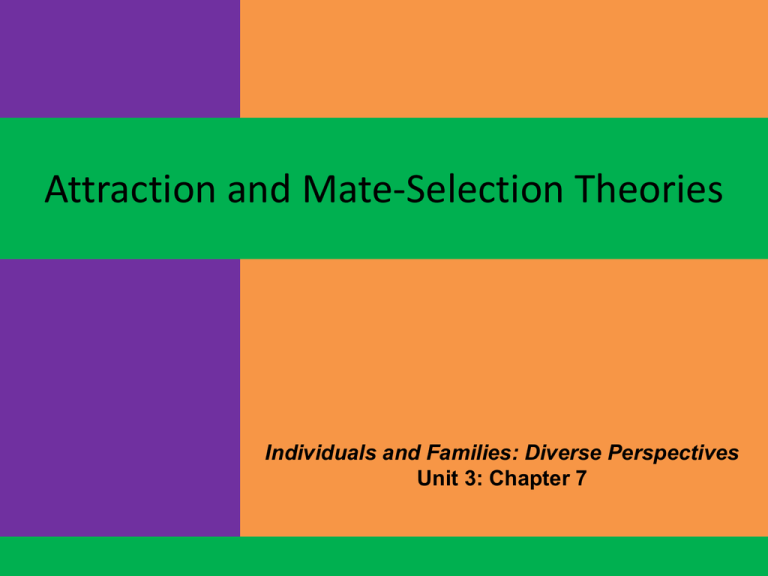
Attraction and Mate-Selection Theories Individuals and Families: Diverse Perspectives Unit 3: Chapter 7 How do we select the person we marry? Marriage in Canada • Most marriages in Canada are a result of free-choice mate selection where people are attracted to one another, fall in love, and make the decision to marry • There are several theories that can be used to explain the attraction between individuals and the unconscious choices people make when they choose a spouse or partner Evolutionary Psychology • Evolutionary psychology, a branch of anthropology, explains that sexual attraction can be traced to our prehistoric ancestors • Strategies that help individuals compete for limited resources to survive, reproduce, and raise children are called adaptive behaviours • These adaptive behaviours gave individuals an evolutionary advantage that allowed them to pass on their genes and culture to the next generation Did we inherit the habits of our ancestors? ● Evolutionary psychologists studied evidence collected from around the world and have determined that adaptive behaviours helped ensure the birth and survival of offspring ● Women chose mates who had resources and who therefore could be good providers ● Men chose mates who could bear and feed children Sexual Attraction Today Studies reveal that individuals are still attracted to the person that can help them raise the most successful children: Men Women attracted to physically appealing, younger women (implies fertility) attracted to older, financially secure men (implies a good provider) However, in all cultures, “men and women wanted mates who were intelligent, kind, understanding, dependable, and healthy” (Buss, 2007) Social Homogamy • Explains that individuals are attracted to people from similar social and cultural backgrounds • Often ensures common social, cultural, and economic values and lifestyles • Research has shown a high correlation between age, race, ethnic background, religion, socioeconomic status, and political views (Buss, 1994, 2007) Social homogamy can also be used to explain the attraction between two people who are from different ethnic backgrounds but are born or socialized in the same socio-economic environment Ideal Mate Theory • This theory states that attraction is based on an individual’s unconscious image of the “ideal mate” • It is founded on the symbolic interactionist perspective because a person’s image of the ideal mate is formed from their perceptions of the physical, cultural, and socio-economic factors they value Love at first sight? • Ideal mate theory supports the concept of love at first sight because everyone has an unconscious ideal of what is attractive and lovable in a mate • Our perceptions of what is attractive are formed from both good and bad experiences we have with other people, our family, and even media personalities we are familiar with What are some characteristics that you find attractive in a person? Exchange Theory • States that attraction is based on what people are really like, rather than on what is ideal • It explains how individuals are attracted to different people, that is, we do not all search for the same “ideal mate” • Tries to answer the question: What do they see in each other? What do they see in each other? • Exchange theory suggests that individuals assess their resources—what they have to offer in a relationship: physical attractiveness, educational attainment, wealth, social status, or specialized interests—and look for the best possible mate who will be attracted by these resources (Small, 1995) • This means that sometimes an attractive but shy person might attract an outgoing, less physically attractive mate A final word about love… • Some researchers suggest couples who live and work together to raise children probably would grow to love one another regardless of how their marriage came about (Yalom, 2001) • Yet, in 87 percent of all cultures, the relationships between men and women are based on romantic love (Nadeau, 1997)
